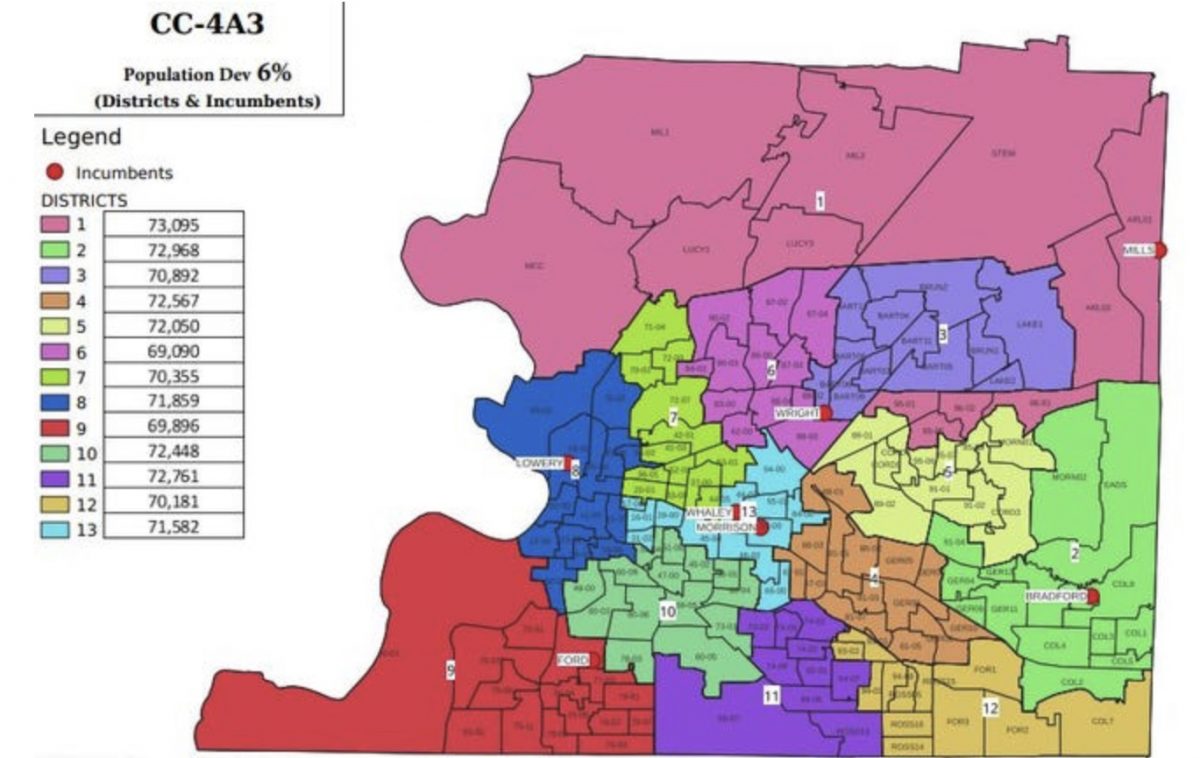On Monday, November 8, the Shelby County Commission may — repeat, may — finalize its required work on redistricting in the wake of the 2020 census. The Shelby County Election Commission has set the same date as its deadline for preparing ballot information for the 2022 election cycle.
But disagreements — many of them overtly political — linger on the Commission over which precincts should go exactly where. This is despite the fact that the county’s legislative body formally approved a final redistricting map at its regular Monday meeting this past week.
Yet several Commissioners made known their discontent and will have one last chance to propose changes at the special called meeting November 8.
David Bradford of District 2, comprising most of Collierville both before and after the redistricting process, objects to the separation of a precinct containing Collierville High School, destined on the new map for District 12, the bailiwick of Van Turner in south Shelby County.
Turner, a former chairman and a proponent of accepting the general outlines of the new map (one of four discussed last Monday), is a Democrat. Bradford is a Republican.
Bradford believes the high school is an integral part of the Collierville voting community and should not be detached from it. Turner contends that, while he has levied no special claim upon the area, the precinct in question is politically and ethnically diverse. He also maintains that the flow of county population eastward made decisions of the sort lamented by Bradford inevitable.
The chief architect of all the maps considered during several weeks of discussion was Derrick Harris, who was employed by the Commission as a special assistant for the process. Harris noted that his task, a difficult one, was to determine the boundaries of 13 commission districts and to keep them as equal as possible, ideally within a 6 percent margin of difference, all the while accounting for the actual post-census shape of Shelby County population.
Another complainant about the proposed new boundaries is Mark Billingsley of District 4, focused on Germantown. Billingsley, a Republican, objects to what he sees as the unnecessary detachment of a precinct in the Farmington Elementary School area “in the heart of Germantown.” The new map assigns that precinct to Bradford’s District 2.
An even more perplexing circumstance of the new configuration is the fact that the proposed new districts of Brandon Morrison, Republican of the current District 13, and Michael Whaley, Democrat of District 5, overlap to the point that the two commissioners are in the same new district, incorporating parts of East Memphis, Cordova, Binghampton, and Germantown, and would have to oppose each other.
Both Morrison and Whaley are vexed by the predicament. Morrison was more vocal at last Monday’s meeting, objecting to the carve-out of Memphis precincts from her current constituency and their proposed relocation in suburban turf.
She would also be faced with a more Democratic-leaning constituency than she has had in the past, while Whaley’s predicament would be similar, in reverse.
No matter what the eventual boundaries of the 13 commission districts turns out to be, the political breakdown will likely be 9 districts with predominantly Democratic populations and 4 that would be GOP-dominated.
The lineup at the present is 8 Democrats and 5 Republicans, though two of the Democrats — Edmund Ford Jr in District 9 and Eddie Jones in District 11 — often align themselves with the Republican members.
